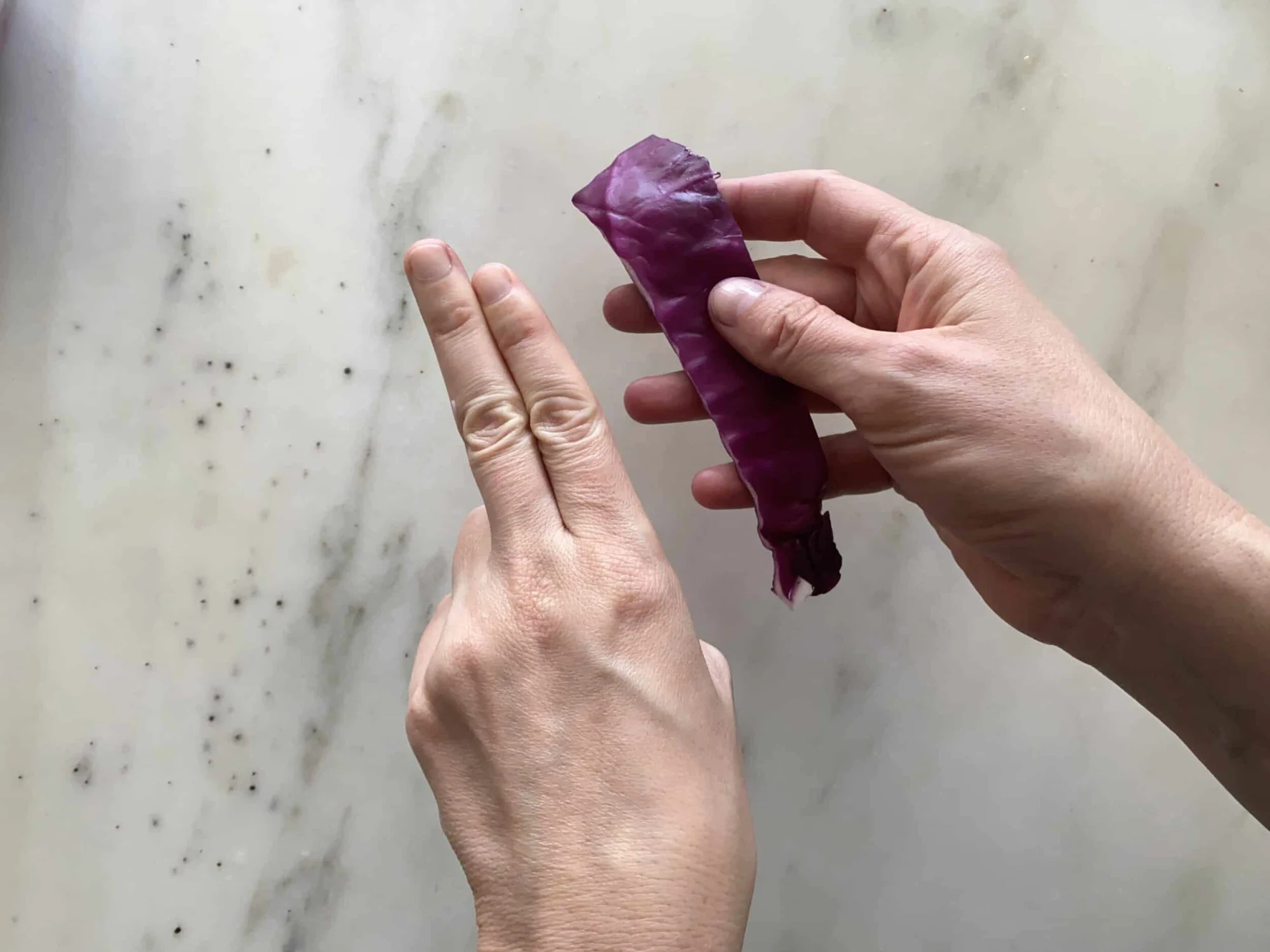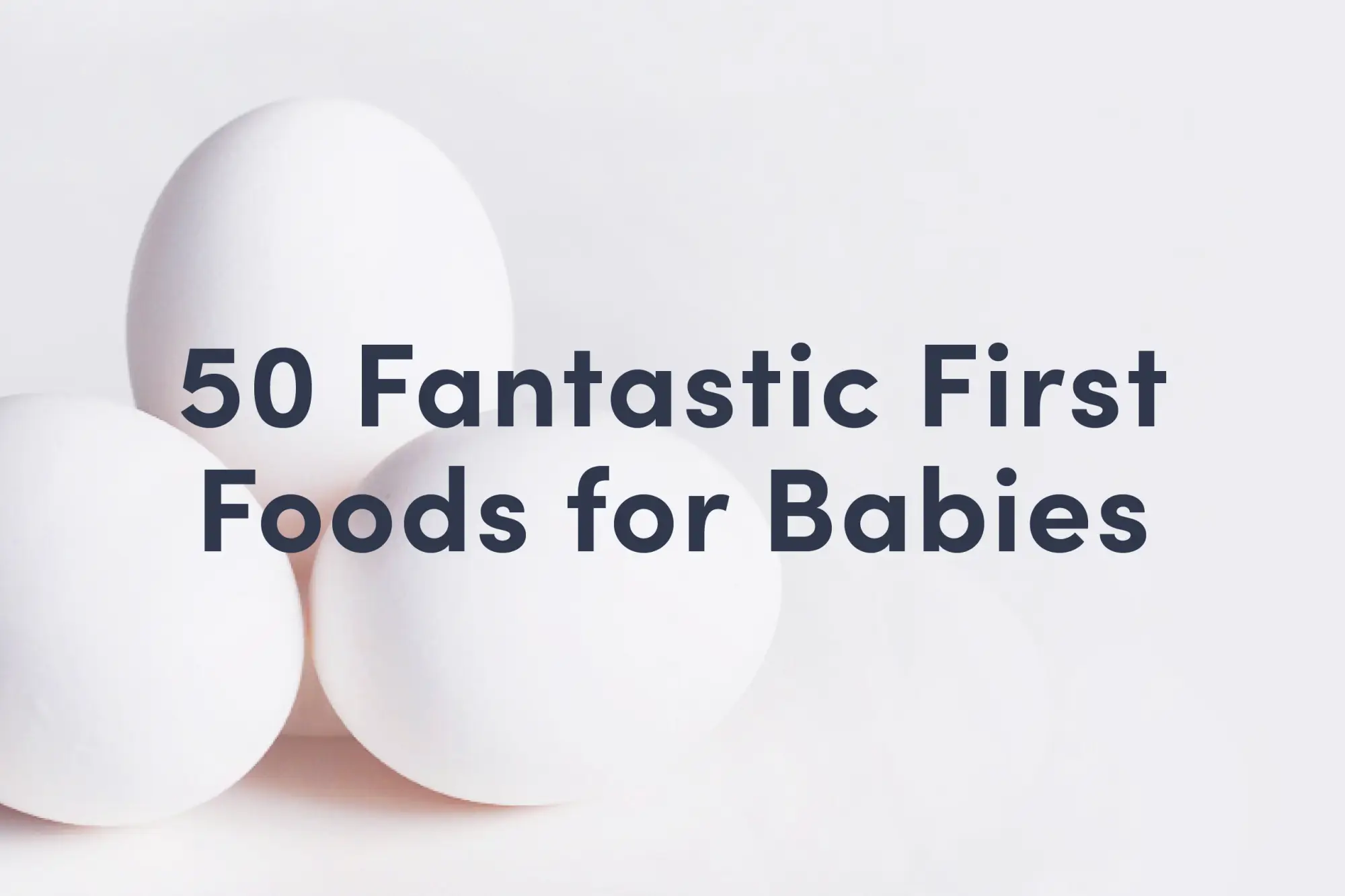Cabbage
Vegetable
Age Suggestion
6 months
Iron-Rich
No
Common Allergen
No

When can babies have cabbage?
Cabbage may be introduced as soon as baby is ready to start solids, which is generally around 6 months of age.
Humans learned to cultivate cabbage from wild varieties growing in the fertile lands around the Mediterranean Sea. Some modern types have smooth, waxy leaves that are tightly clustered, like brussels sprouts and red cabbage. Others are crinkly and easier to peel away from the head, like the leaves of napa cabbage and savoy cabbage. There are also cabbages with dark leafy greens on sturdy stems, like bok choy, collard greens, and kale.
Is cabbage healthy for babies?
Yes. Cabbage is rich in fiber, fluid, and folate, in addition to vitamins B6, C, and K. Plus, it offers a variety of antioxidants. These work together to support baby’s gut microbiome, hydration, brain development, metabolic processes, iron absorption, immunity, blood clotting, bone health, and more. Plus, cabbage is rich in antioxidants to help support bodily repair processes. Fermented forms, such as kimchi and sauerkraut, provide probiotics to further support baby’s digestive system.
Since cabbage is rich in fiber and carbohydrates, it can cause gas and temporary digestive discomfort. Fortunately, over time, the digestive system adapts when fiber-rich foods are offered regularly and in amounts that baby individually tolerates. Overall, cabbage helps support a healthy digestive system and some gas is completely normal for all ages.
Is cabbage a common allergen?
No. Allergies to cabbage are rare, but not unheard of. Individuals who are allergic or sensitive to other members of the cruciferous family, such as mustard greens and broccoli, may also be sensitive to cabbage.
Individuals with Oral Allergy Syndrome (also known as pollen food allergy syndrome), and in particular, those with sensitivities to mugwort pollen, may also be sensitive to cruciferous vegetables such as cabbage. Oral Allergy Syndrome typically results in short-lived itching, tingling, or burning in the mouth and is unlikely to result in a dangerous reaction.
As you would when introducing any new food, start by offering a small quantity for the first few servings. If there is no adverse reaction, gradually increase the quantity over future meals.
Is cabbage a choking hazard for babies?
Yes, thick pieces of raw cabbage are firm and hard to chew, qualities that can increase choking risk. To reduce the risk, prepare and serve cabbage in an age-appropriate way as described in the How to Serve section. As always, make sure you create a safe eating environment and stay within an arm’s reach of baby during meals. For more information on choking, visit our sections on gagging and choking and familiarize yourself with the list of common choking hazards.
Learn the signs of choking and gagging and more about choking first aid in our free guides, Infant Rescue and Toddler Rescue.
Videos
Do I need to worry about the nitrates in cabbage?
No. Offer vegetables that contain nitrates (arugula, beets, cabbage, lettuce, spinach, and squash to name a few) as part of a variety of foods in the diet. Nitrates are naturally-occurring compounds which, if consumed in excess, may negatively affect oxygen levels in the blood. That said, babies who are allowed to self-feed typically do not consume excessive amounts of solid food because they need lots of practice to learn how to eat it. Nitrates in vegetables are generally not a cause for concern, and the benefits of introducing these vegetables as part of a balanced diet typically outweigh the unlikely risk of excessive consumption.
How do you serve cabbage to babies?
Every baby develops on their own timeline, and the suggestions on how to cut or prepare particular foods are generalizations for a broad audience.
6 months old +:
Offer finely chopped or shredded cooked cabbage mixed into mashed vegetables, porridge, or another soft food for baby to scoop. While you can offer the cooked cabbage on its own, the small pieces may cling to baby’s tongue and the inside of their mouth, which can cause gagging. Finely chopped or shredded fermented cabbage like kimchi and sauerkraut can also be offered this way once any common allergens in the food have been safely introduced.
Alternatively, offer a strip of raw cabbage about the size of two adult fingers pressed together for baby to munch on. A strip from a sturdy leaf of the cabbage offers a shape and texture that helps baby build eating skills; just know that baby will not consume much (if any!) of the cabbage when it is offered this way. If baby already has teeth, you can reduce choking risk by lightly steaming the strip. If a piece breaks off in baby's mouth, stay calm and let baby try to work the food forward.
9 months old +:
At this age, babies begin to develop the pincer grasp (where the thumb and pointer finger meet). When you see signs of this development, try offering bite-sized pieces of raw cabbage or raw shredded cabbage, either on their own or as part of a meal that you are sharing with baby. Baby likely won’t get much cabbage in the belly, and that’s okay. Managing this kind of food is excellent practice for moving firmer textures around in the mouth. If baby is struggling to manage a piece of cabbage, you can demonstrate how to stick your tongue out and spit it out.
12 months old +:
Offer raw or cooked cabbage as desired, in chopped pieces, shreds, strips, or whole leaves. Continue to expect some spitting, but you will likely begin to see more swallowing and consumption around this age, especially as the molars come in, which help the child grind more challenging textures. This is also a great age to encourage self-feeding with utensils. If the child needs help, simply preload an age-appropriate utensil and lay it next to the food for the toddler to pick up.


How to shred raw cabbage for babies (part 1).
How to shred raw cabbage for babies (part 2).
Get baby’s caregivers on the same page as you with our guide, Baby-led Weaning with Daycare & Caregivers.
Written by
Expert Tips Delivered to Your Inbox
Sign up for weekly tips, recipes and more!
The content offered on SolidStarts.com is for informational purposes only. Solidstarts is not engaged in rendering professional advice, whether medical or otherwise, to individual users or their children or families. No content on this site, regardless of date, should ever be used as a substitute for direct medical advice from your doctor or your medical or health professional, nutritionist, or expert in pediatric feeding and eating. By accessing the content on SolidStarts.com, you acknowledge and agree that you are accepting the responsibility for your child’s health and well-being. In return for providing you with an array of content “baby-led weaning” information, you waive any claims that you or your child may have as a result of utilizing the content on SolidStarts.com.







